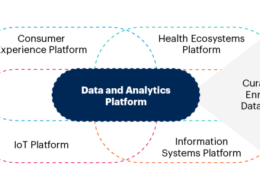Executive Summary
What is the context ? The rise of telehealth
- As the pandemic evolves, consumers still prefer the convenience of digital engagement and virtual-care options. This preference could help more patients access care, while also helping providers to grow.
- Many digital start-ups and tech and retail giants are rising to the occasion, but surveys indicates that physicians may prefer a return to pre-COVID-19 norms.
- Investment in digital health companies has grown rapidly-reaching $21.6 billion in 2020, a 103 percent year-over-year increase-which also suggests that this approach to medicine has staying power.
- That level of demand offers the potential for growth when physicians can meet it.
Three trends from the late-stage pandemic
As COVID-19 continues, three emerging trends could set the stage for the next few years.
- The number of virtual-first players keeps growing, and physicians struggle to keep up
- Patient-physician relationships are shifting
- Physicians and patients see telehealth differently
Four critical actions for providers to consider
Providers may want to define their IRL/URL care strategy to identify the appropriate places for various types of care-balancing clinical appropriateness with the preferences of physicians and patients.
- Determine the most clinically appropriate setting
- Assess patient wants and needs in relevant markets and segments
- Partner with physicians to define a new operating model
- Communicate clearly to patients and others
What is the message?
A seamless In Person Care / Virtual CAre offering could retain patients while delivering high-quality care. Everybody benefits.
Potential benefits to providers
The strategic, purposeful design of a hybrid care delivery model (In Person Care and Virtual Care) healthcare delivery model that respects the preferences of patients and physicians and offers virtual care when it is appropriate clinically may allow healthcare providers
- to participate in the near term,
- retain clinical talent,
- offer better value-based care (and improve outcomes),
- and differentiate themselves strategically for the future.
One of the critical steps in the process will be engaging physicians in the design of new virtual-care models . This has the added benefit of potentially also addressing the problem of physician burnout by offering a range of options for how and where clinicians practice.
This is an Executive Summary of the article “ Patients love telehealth — physicians are not so sure”, published by Jenny Cordina, Jennifer Fowkes, Rupal Malani, and Laura Medford-Davis, on February 22, 2022. The credit to the image is for healthcareitnews.













